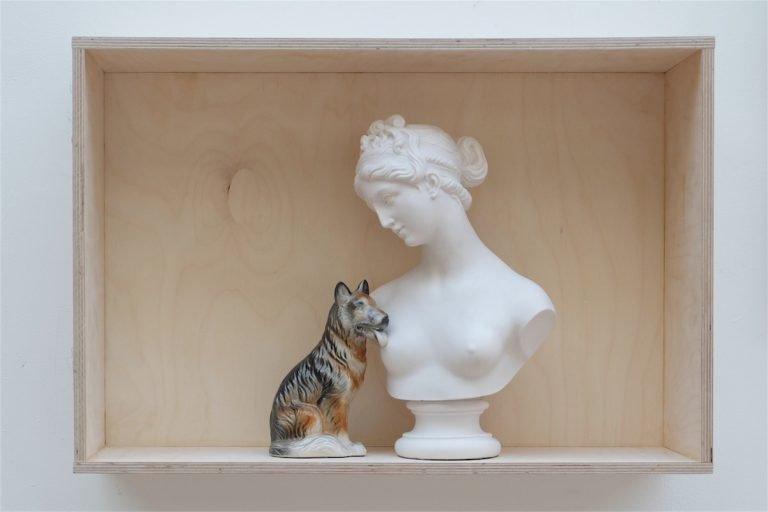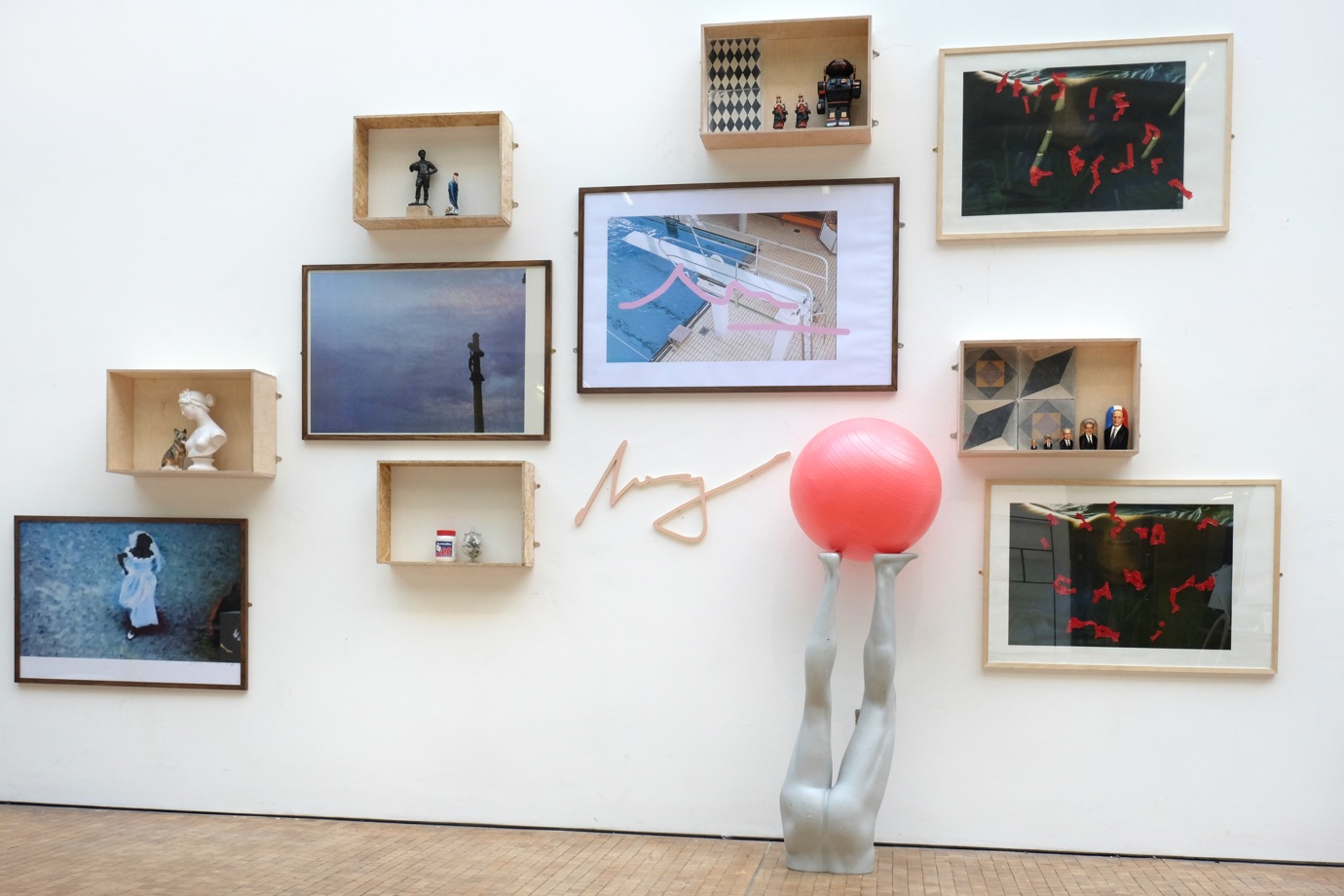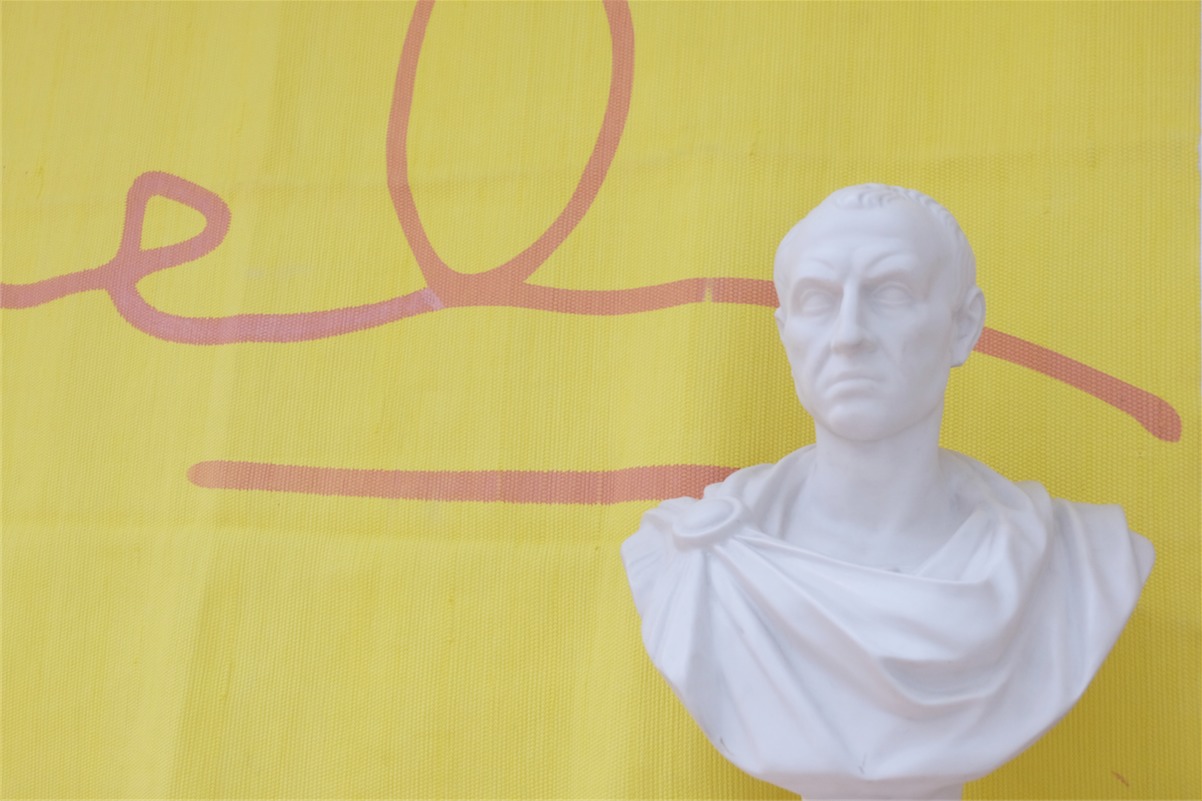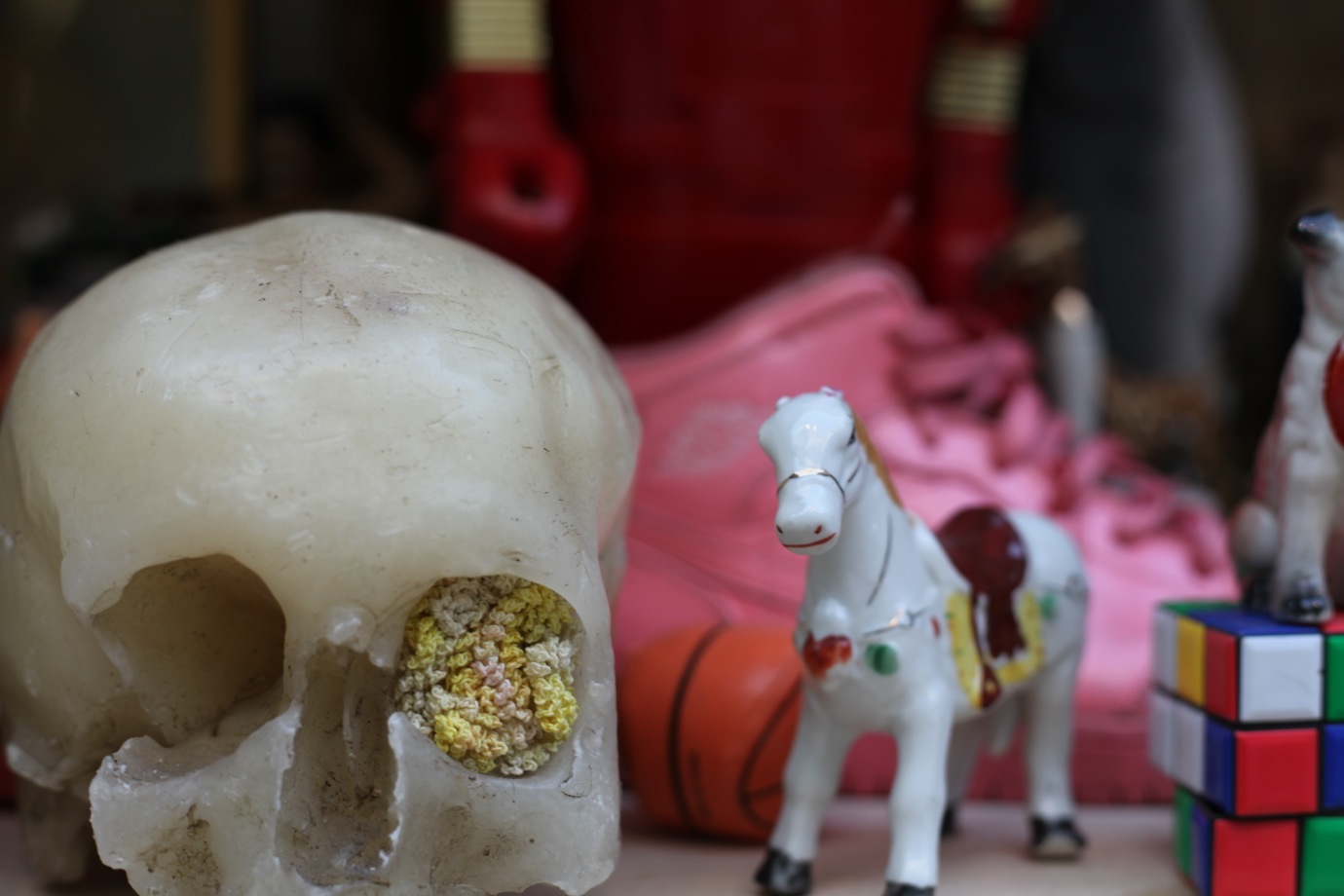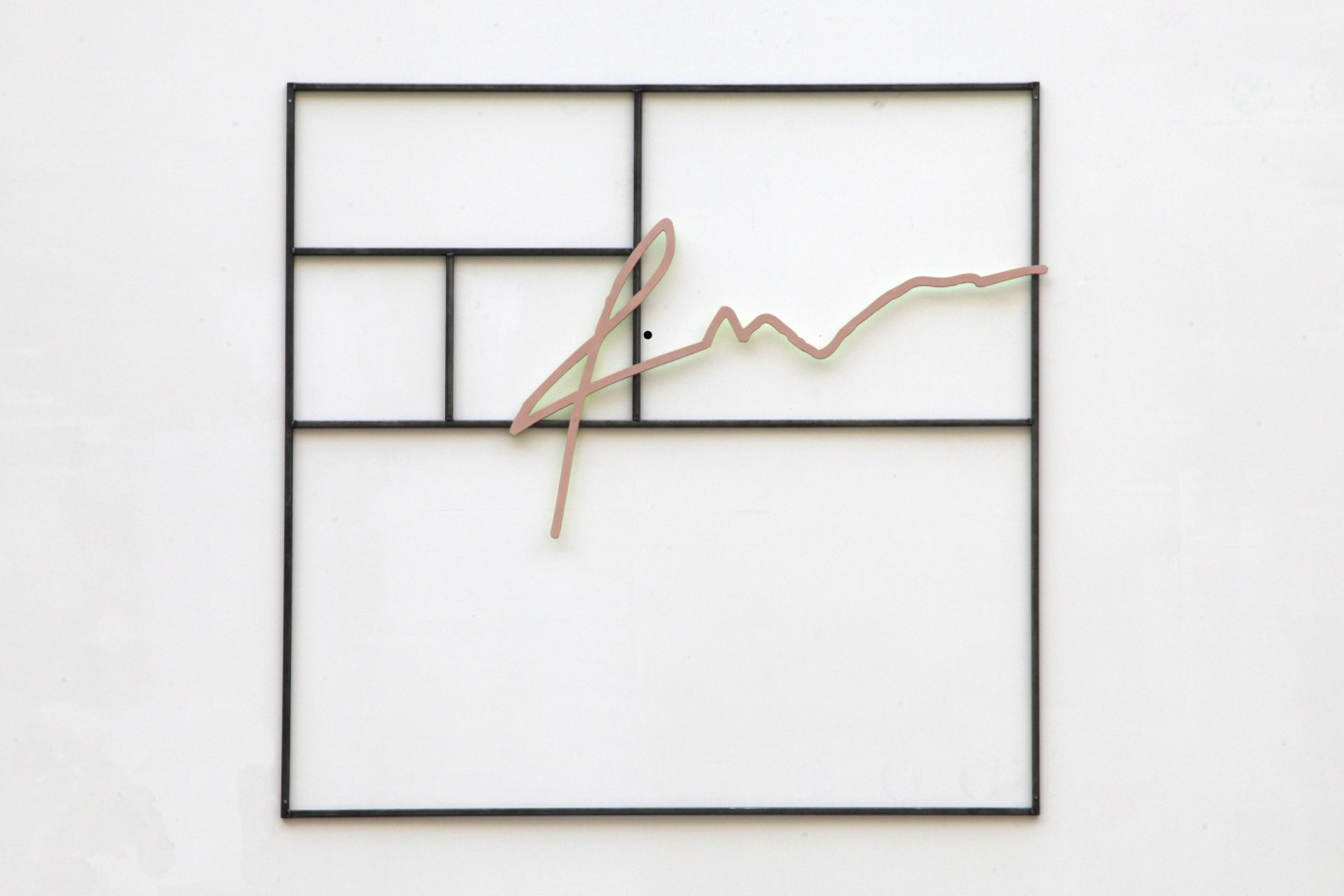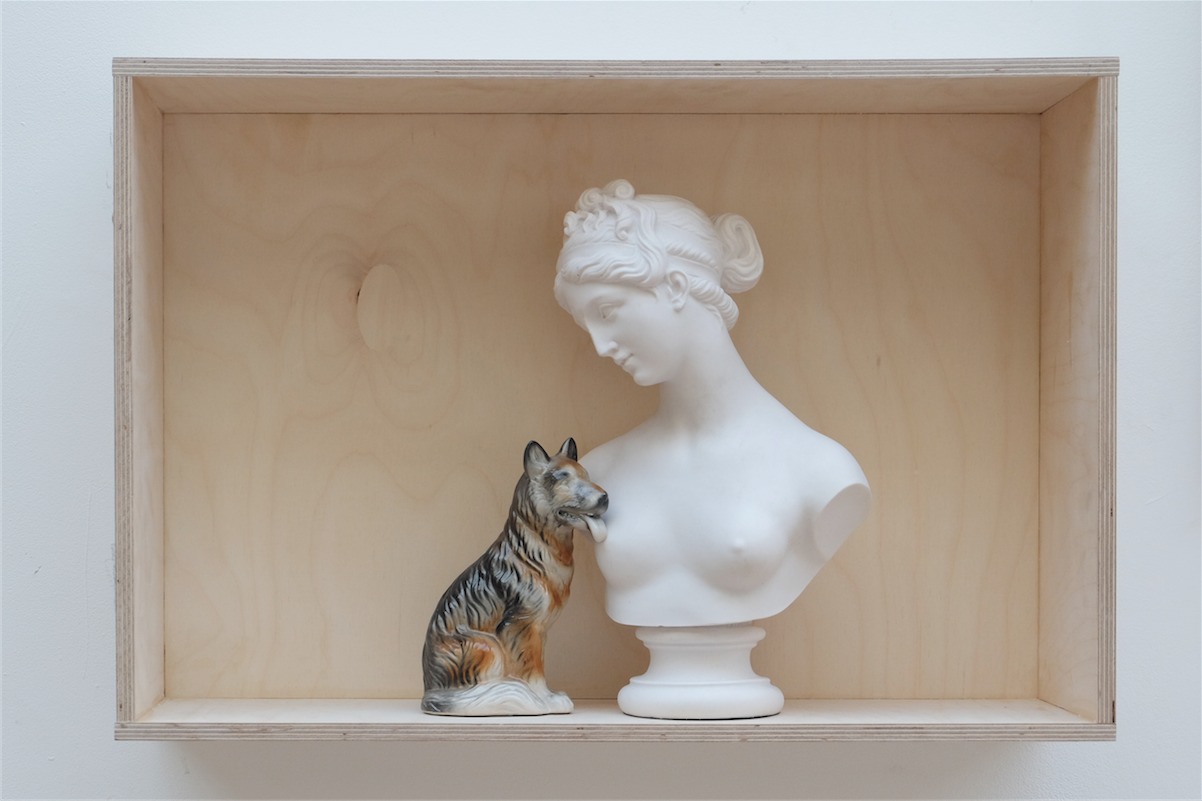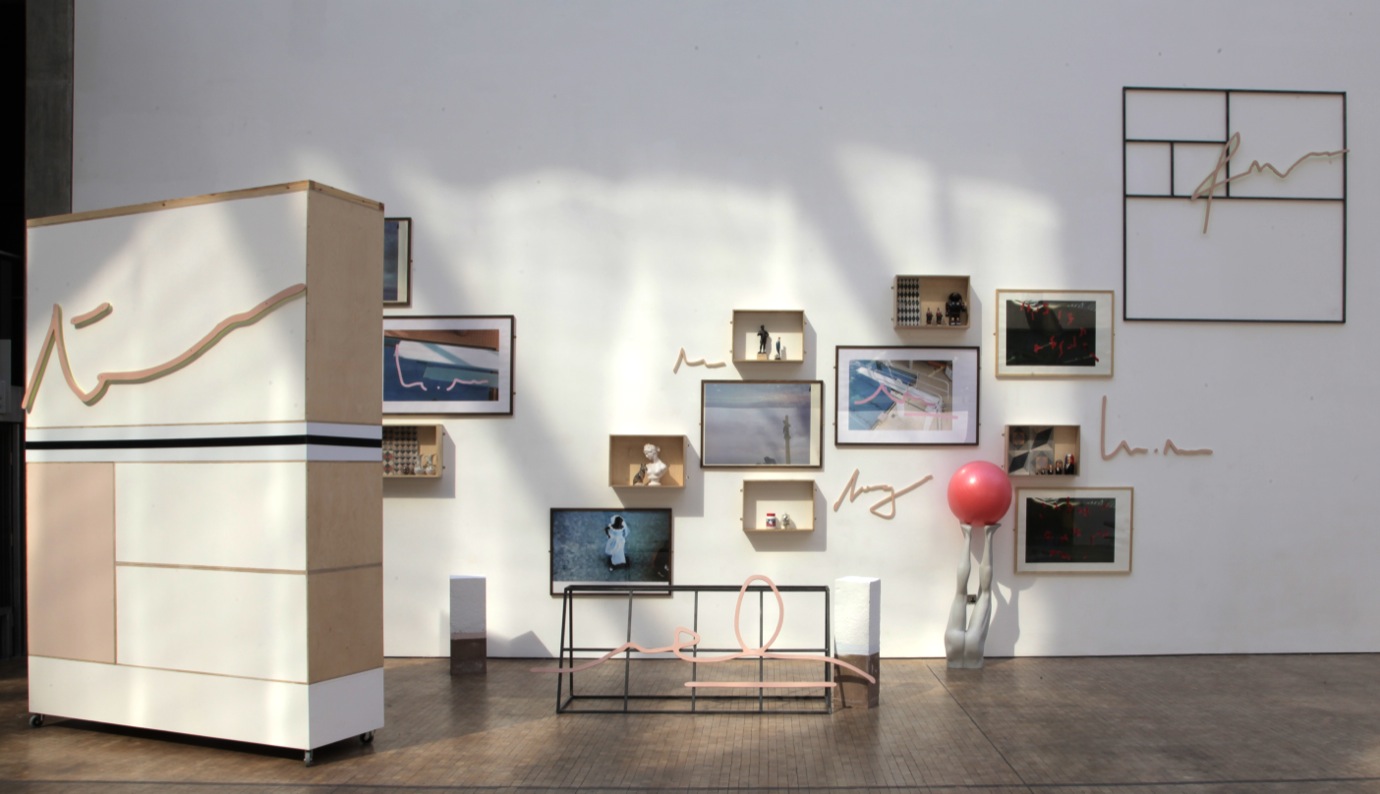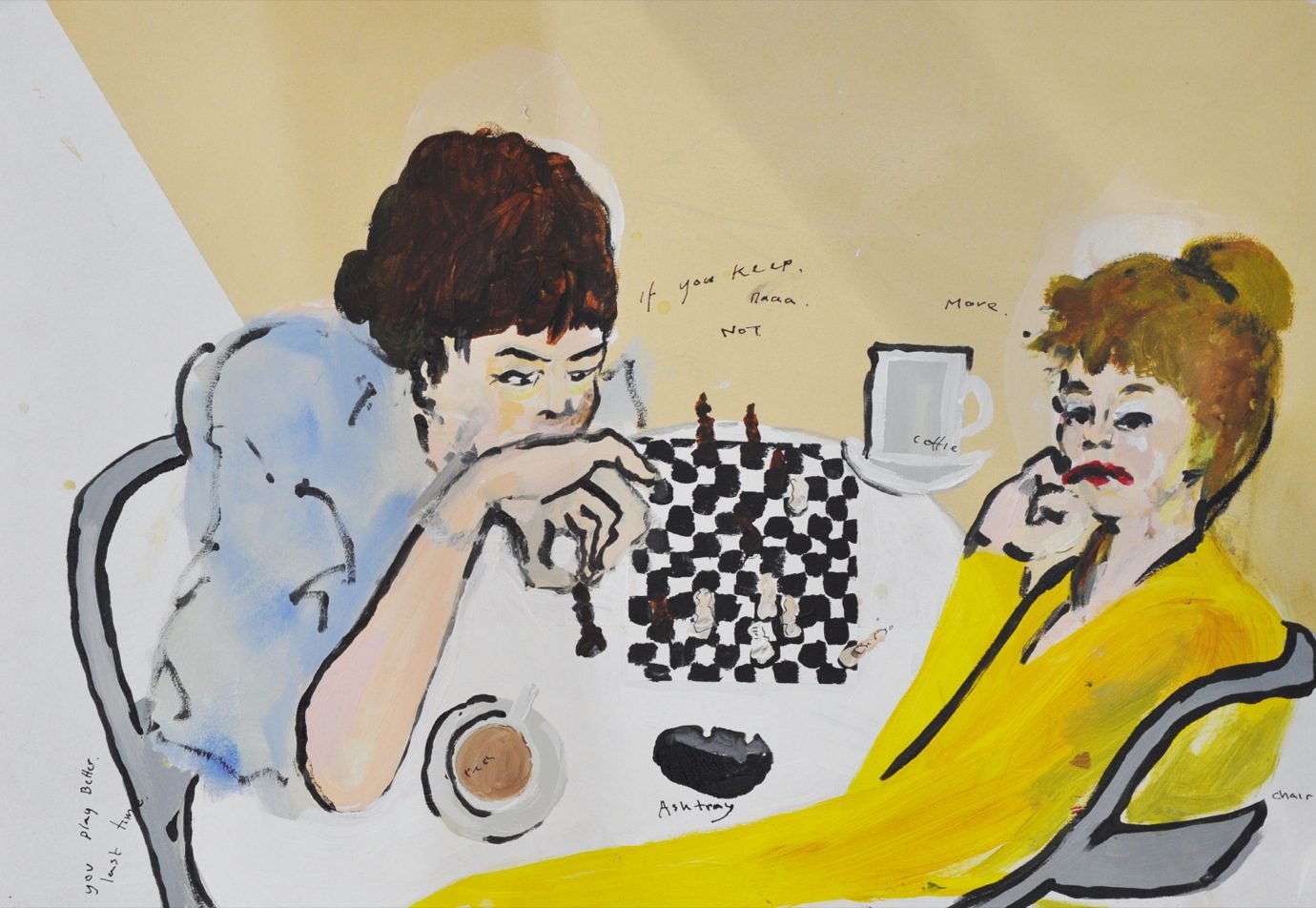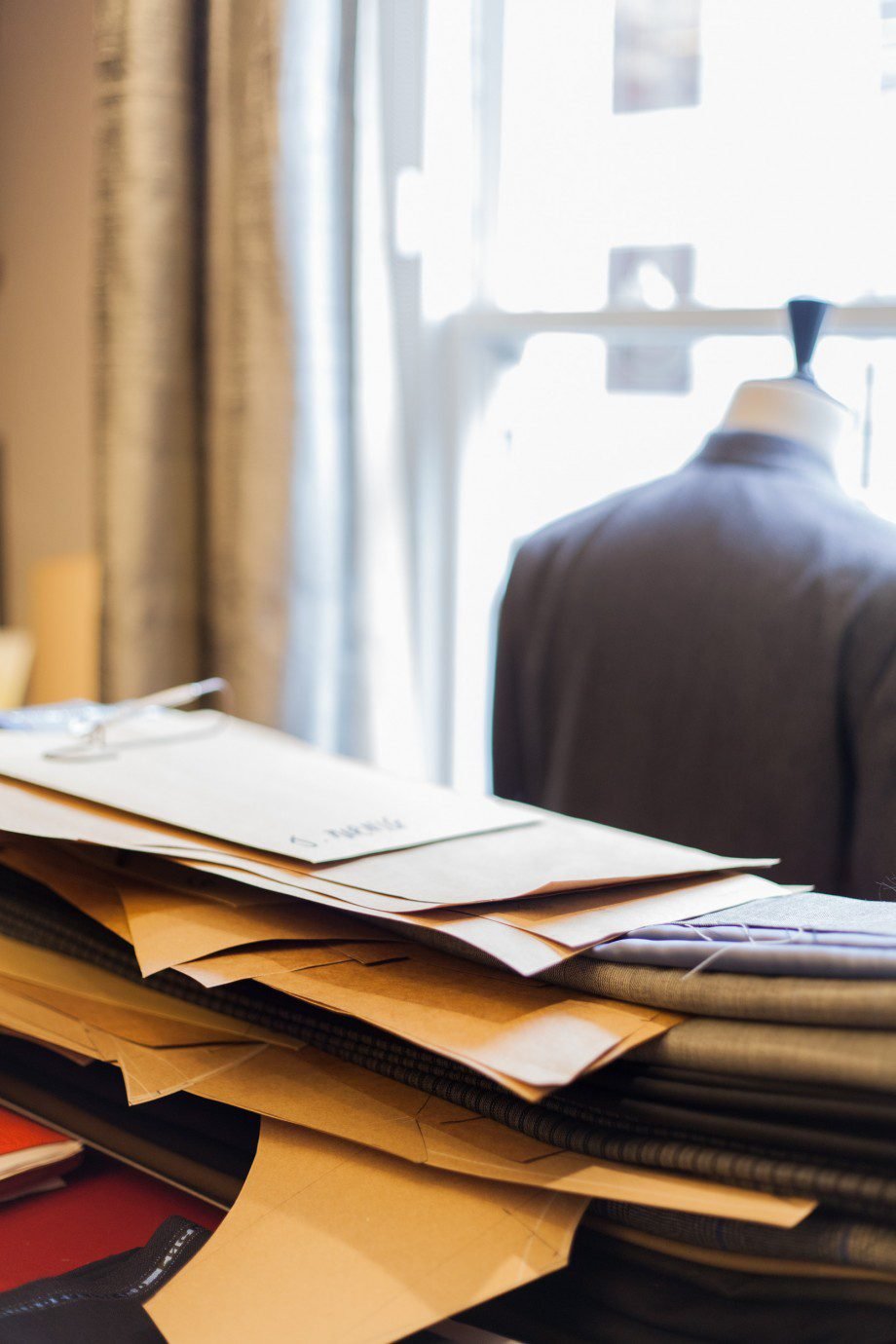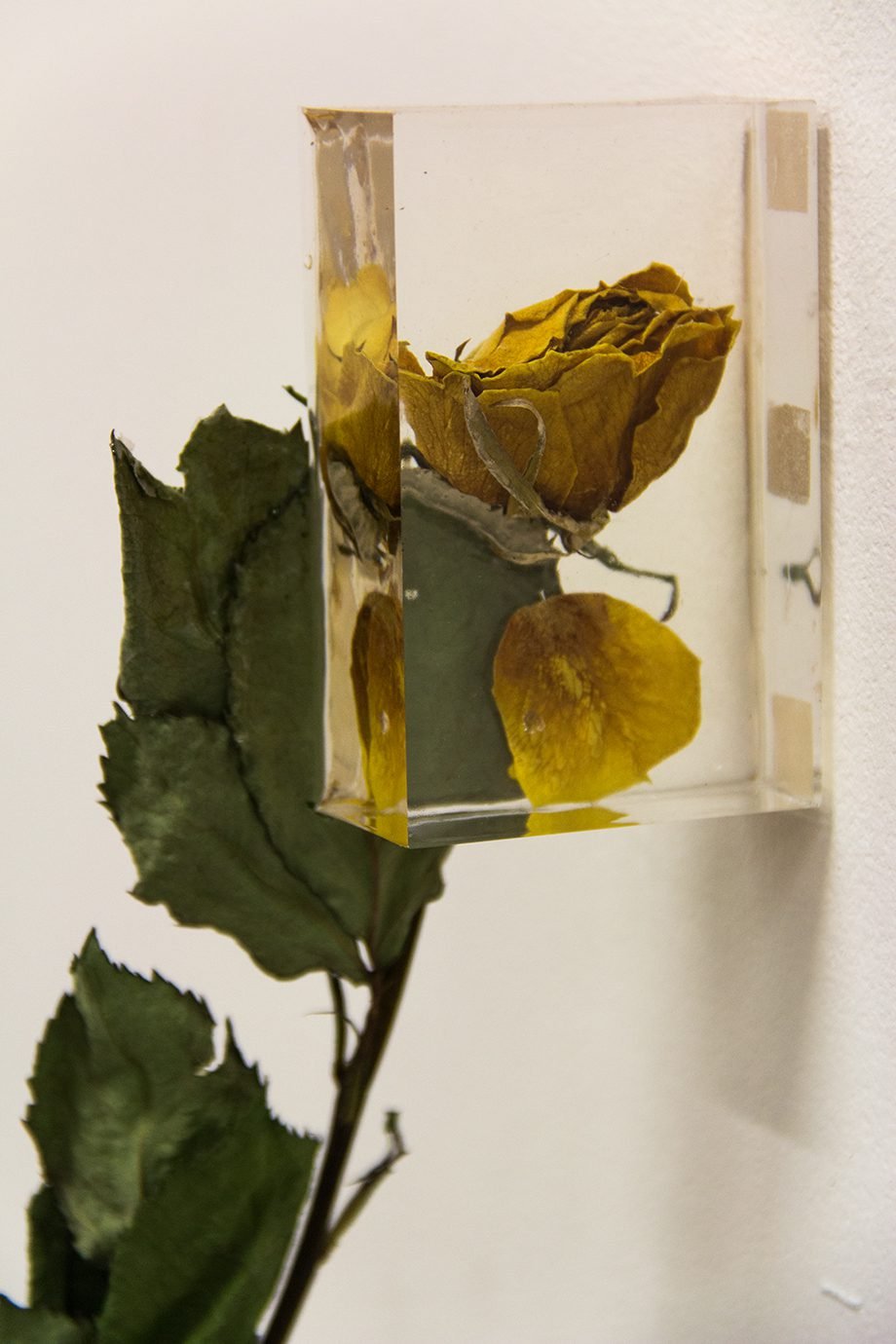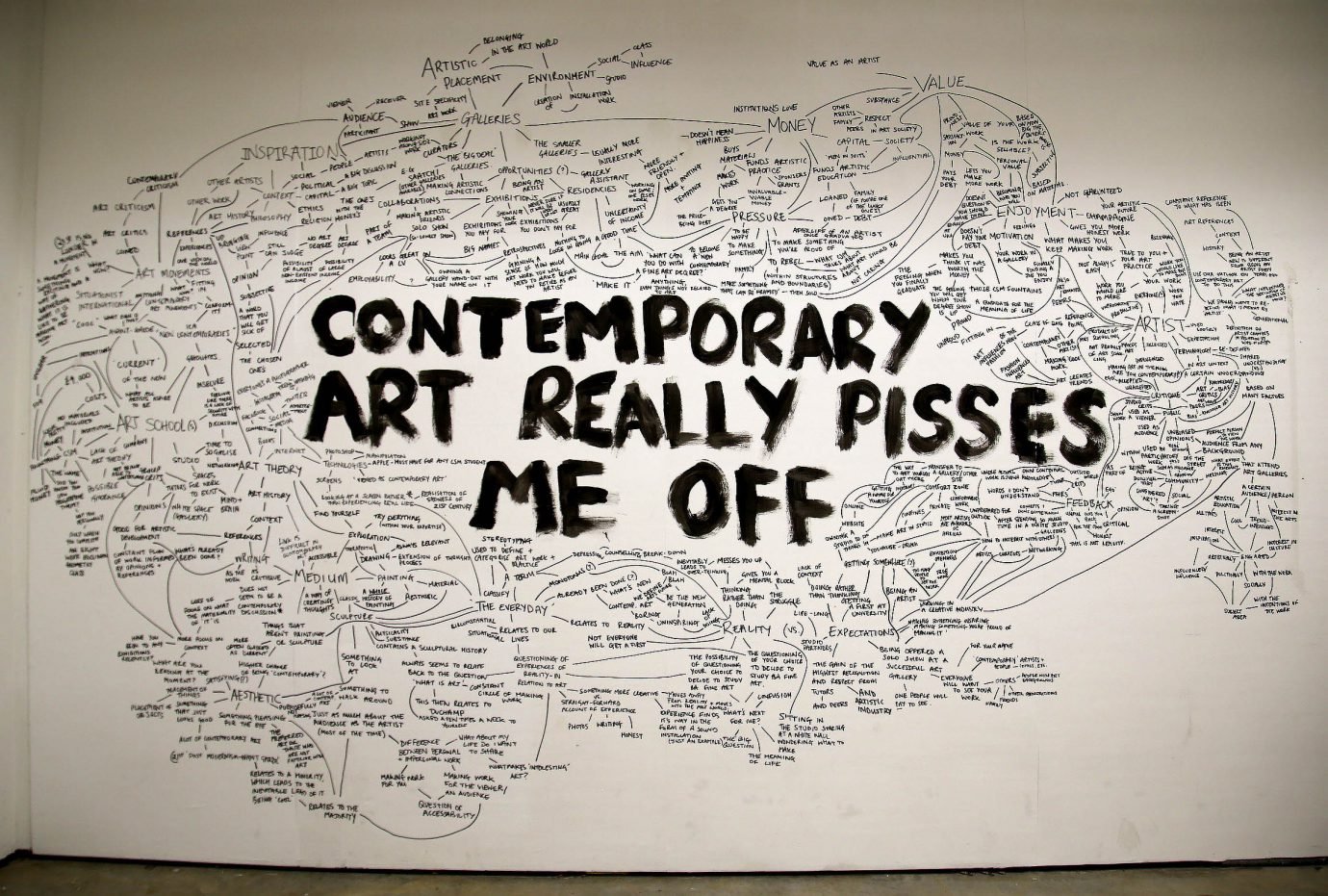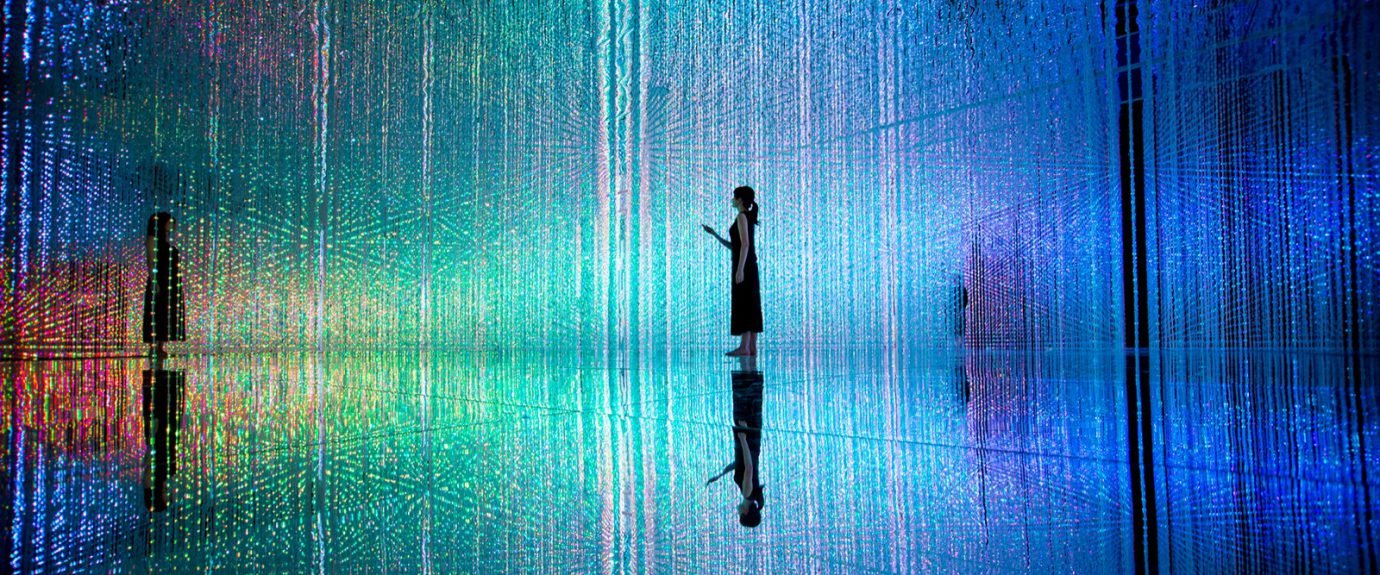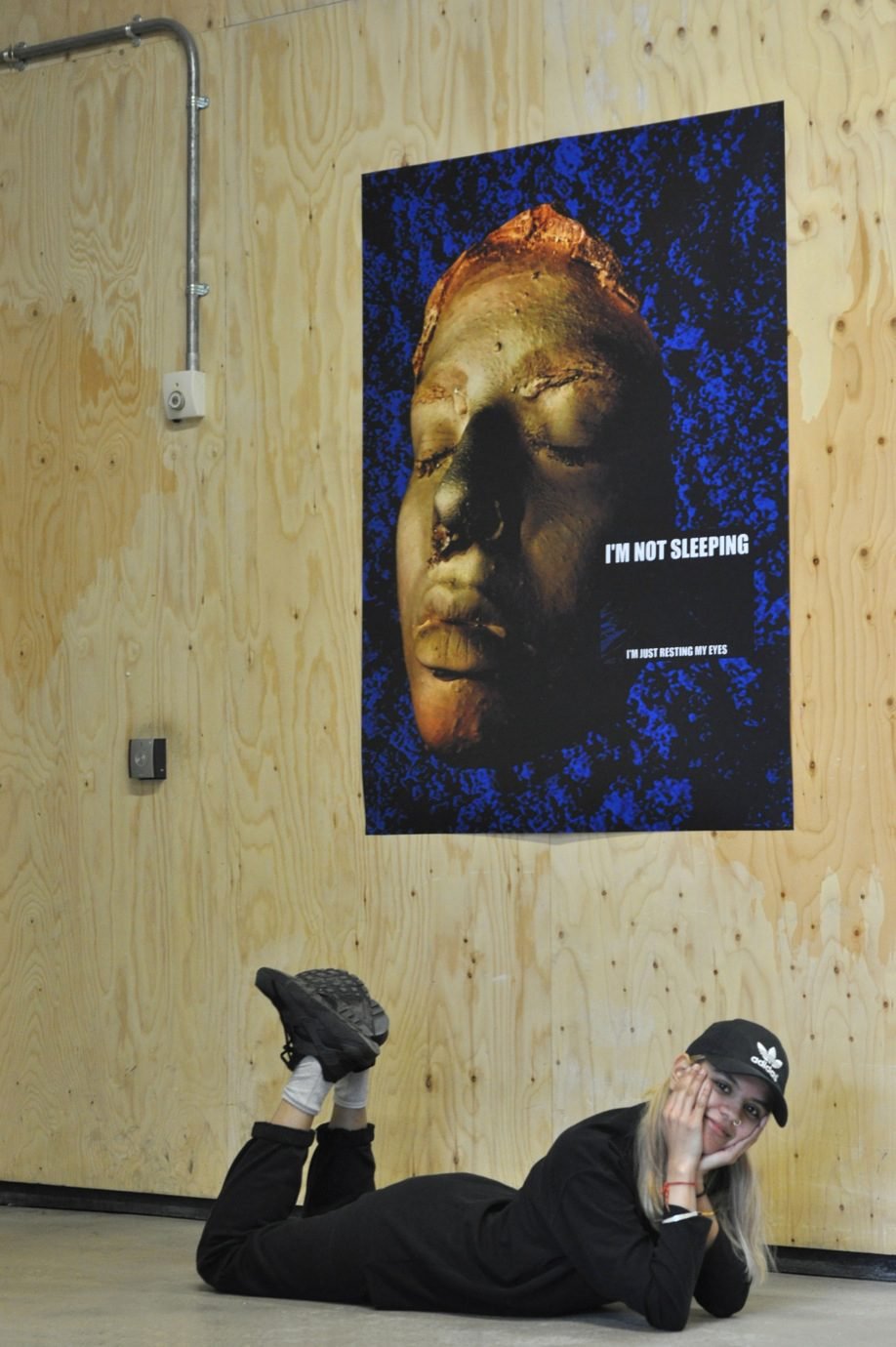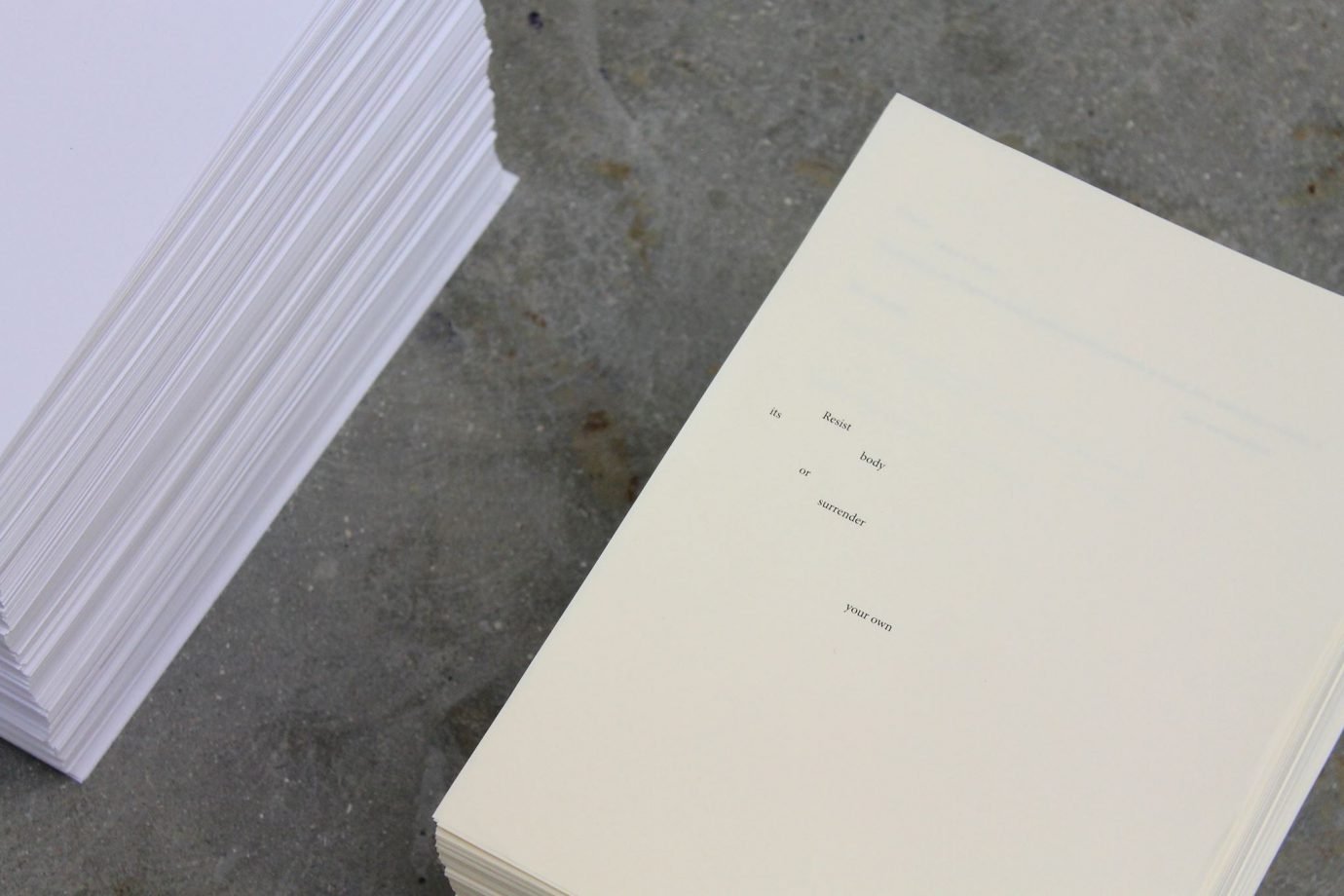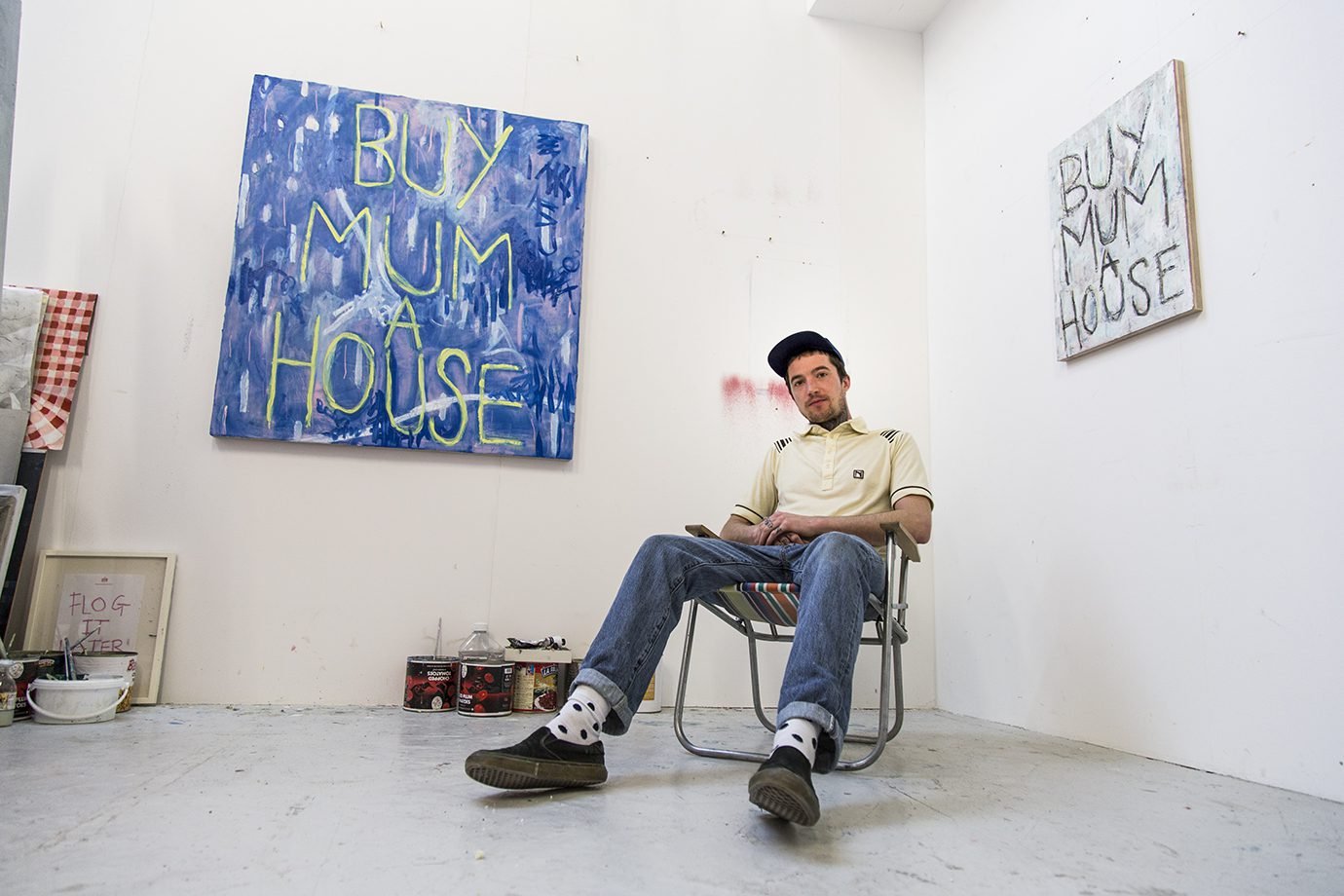Well, it is not a classic collaboration. There was this guy Lukasz Przytarski who asked me if he could dance in front of my work. Everything happened very quickly — it was very spontaneous, and this is a word that’s more important in the title than ‘collaboration’. Lukasz brought a new narrative, a new perspective to the work, responding to the shapes and images I had used. In a way, it made explicit my way of working as a choreographer of objects. I am looking for a certain visual musicality, a certain theatricality in the installation.
“MY PRACTICE IS ABOUT COMPOSING WITH DIFFERENT ELEMENTS. ANYTHING CAN FIT.”
As autumn rolls in, we catch up with BA Fine Art graduate Hugo Cantegrel about a curious response to his final degree show exhibition. Taught on the 3D pathway, he is a self professed ‘choreographer of objects’; we spoke with him after he recently moved to Lisbon to discuss a dancer’s interpretation of his work, collective childhood nostalgia and appropriating your own signature.
Please tell us about this entertaining video, how did it come about and why do you class it as a collaboration?
“I GUESS THE DIVING BOARD REFERS TO A VERY STRONG AND HIDDEN MEMORY THAT WE ALL HAVE: GOING TO A SWIMMING POOL AS A CHILD AND DOING NOTHING BUT DIVING AND DIVING, GOING IN AND OUT OF THE WATER AND RUNNING TO DIVE IN AGAIN.”
Your installation is extremely complex, certainly the largest scale install you’ve done to date, please talk about the process you went through in making it?
Yes, it is the largest scale installation I’ve made so far and it was simply an answer to that big wall [in the CSM street]. As soon as I knew that I was going to exhibit there I wanted my work to inhabit it, to defend itself against the wall. However, my way of working was not any different than usual. The objects chosen were carefully selected because of the memories that they evoke in me. Inevitably, there is a notion of nostalgia embossed within the practice. In contrast, the installation process is more spontaneous and led intuitively, providing the objects with an opportunity to be considered in a new context.
You return to certain motifs: Jesus, exercise equipment, water, toys — could you please comment on a few of these motifs and explain their importance to you?
These objects work as headlights. They belong to a culturally common background or to common memories. They allow the viewer to enter inside the installation and start their own visual narration. For example, I guess the diving board refers to a very strong and hidden memory that we all have: going to a swimming pool as a child and doing nothing but diving and diving, going in and out of the water and running to dive in again.
You seem to reference language or the loss and deconstruction of it. How does it fit into your practice more generally?
My practice is about composing with different elements. Anything can fit. The elements make sense through how they are presented. The works about the construction of words started with signatures. As a child, when you have to sign, people can read your name, but as more time passes, it becomes more unreadable. The more you appropriate it from yourself, the more true the signature becomes. Writing is very close to drawing and in this work, the words become shapes and give a visual musicality to the installation. They help the eyes of the viewer to go from one place to another.
Finally, how was your experience of CSM, the degree show process, and what have you been up to post-art school?
CSM was a good experience, with its ups and downs. The way of teaching is very different from the French way, and it was hard for me to get into it, but the facilities were amazing. I was awarded runner-up for the Nova award for my degree show and I’ve now moved to Lisbon! I am going to start a cultural project whilst carrying on with my personal practice.

